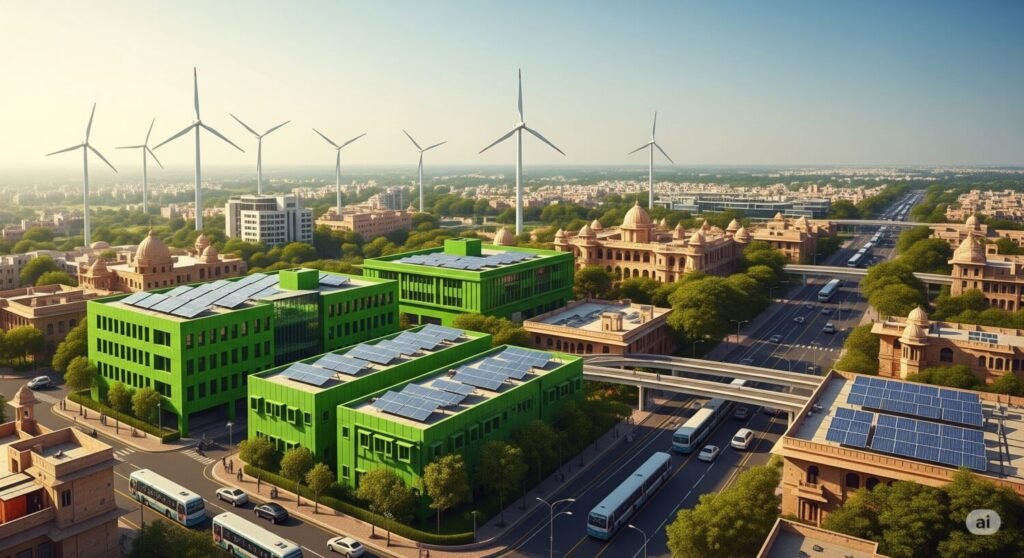Discover how India’s ambitious climate goals require a staggering $1.5 trillion investment, driving growth in renewable energy and sustainable infrastructure.
India, a nation on a rapid growth trajectory, faces a significant yet exciting challenge: addressing climate change while continuing its development. The path forward demands substantial investment, particularly in sectors crucial for a sustainable future. Indeed, a recent report from Deloitte India highlights a staggering need for USD 1.5 trillion in investment by 2030 to tackle this monumental task. This isn’t just about environmental responsibility; it’s a strategic move that promises economic growth, job creation, and enhanced energy security for the entire nation.
The Core of the Investment: Renewable Energy and Beyond
The push for a greener India is deeply rooted in its commitment to renewable energy. Achieving the ambitious target of 500 gigawatts (GW) of renewable energy capacity, for instance, will necessitate an estimated USD 200-250 billion by 2030. This encompasses not only the installation of solar panels and wind turbines but also the development of advanced manufacturing capabilities and the crucial expansion and integration of the national grid. Furthermore, supporting this massive renewable energy expansion requires an eightfold increase in energy storage infrastructure. This alone demands an additional USD 250-300 billion in capital expenditure by fiscal year 2030.
Beyond energy, the investment extends to a variety of interconnected sectors, all vital for a comprehensive climate strategy. These include:
- Water security: Ensuring access to clean water and efficient water management systems.
- Sustainable agriculture: Implementing practices that protect the environment while feeding a growing population.
- Sustainable transport infrastructure: Developing eco-friendly transportation networks, from electric vehicles to improved public transit.
- Circular economy: Shifting towards models that minimize waste and maximize resource utilization.
- Waste management: Modernizing systems for efficient waste collection, processing, and recycling.
- Digital systems and platforms: Leveraging technology to monitor environmental progress and optimize resource use.
A Ripple Effect of Benefits
The sheer scale of these investments might seem daunting, however, the potential returns are immense and far-reaching. As Viral Thakker, a Partner and Sustainability and Climate Leader at Deloitte South Asia, aptly points out, these investments are not merely expenditures. They are catalysts for a multitude of positive outcomes. For example, reduced emissions are a direct environmental benefit, leading to cleaner air and a healthier planet. Additionally, these initiatives are expected to spur significant job creation across various industries, offering new opportunities for a skilled workforce. Moreover, by diversifying its energy sources and building resilient infrastructure, India will enhance its energy security, reducing reliance on volatile fossil fuel markets. Ultimately, these efforts will also provide critical protection for vulnerable communities, safeguarding them from the adverse impacts of climate change.
Mobilizing the Capital: Innovative Financial Solutions
To bridge the substantial funding gap, innovative financial instruments will be absolutely essential. Traditional funding mechanisms alone will not suffice. Therefore, the report emphasizes the importance of leveraging tools such as:
- Green bonds: Debt instruments specifically issued to finance environmentally friendly projects.
- Climate funds: Dedicated funds established to support climate change mitigation and adaptation efforts.
- Blended finance models: Combining public and private capital to de-risk investments and attract greater private sector participation.
These financial strategies are crucial for mobilizing the necessary capital from both domestic and international sources, ensuring that India can meet its ambitious climate goals and pave the way for a truly sustainable future.










